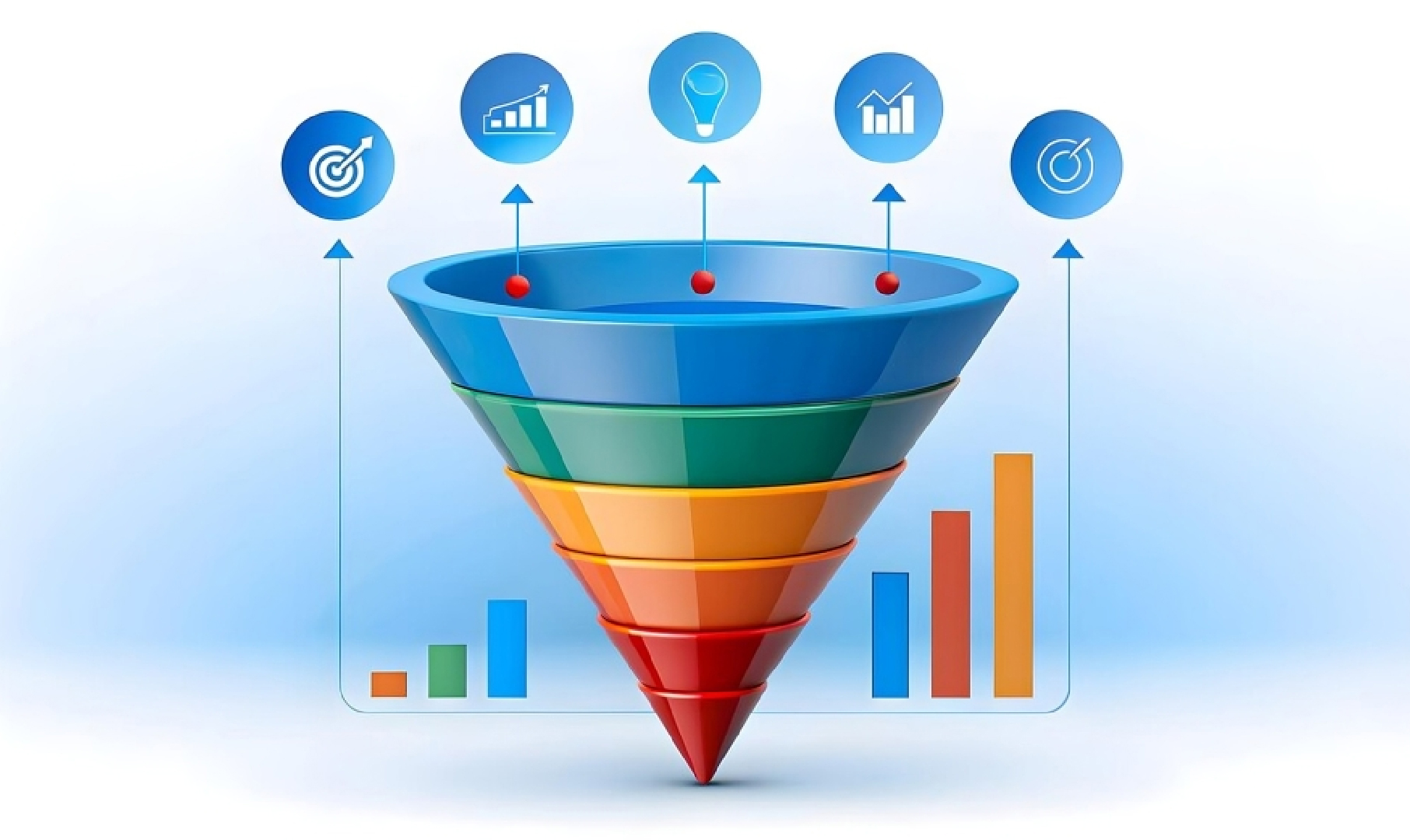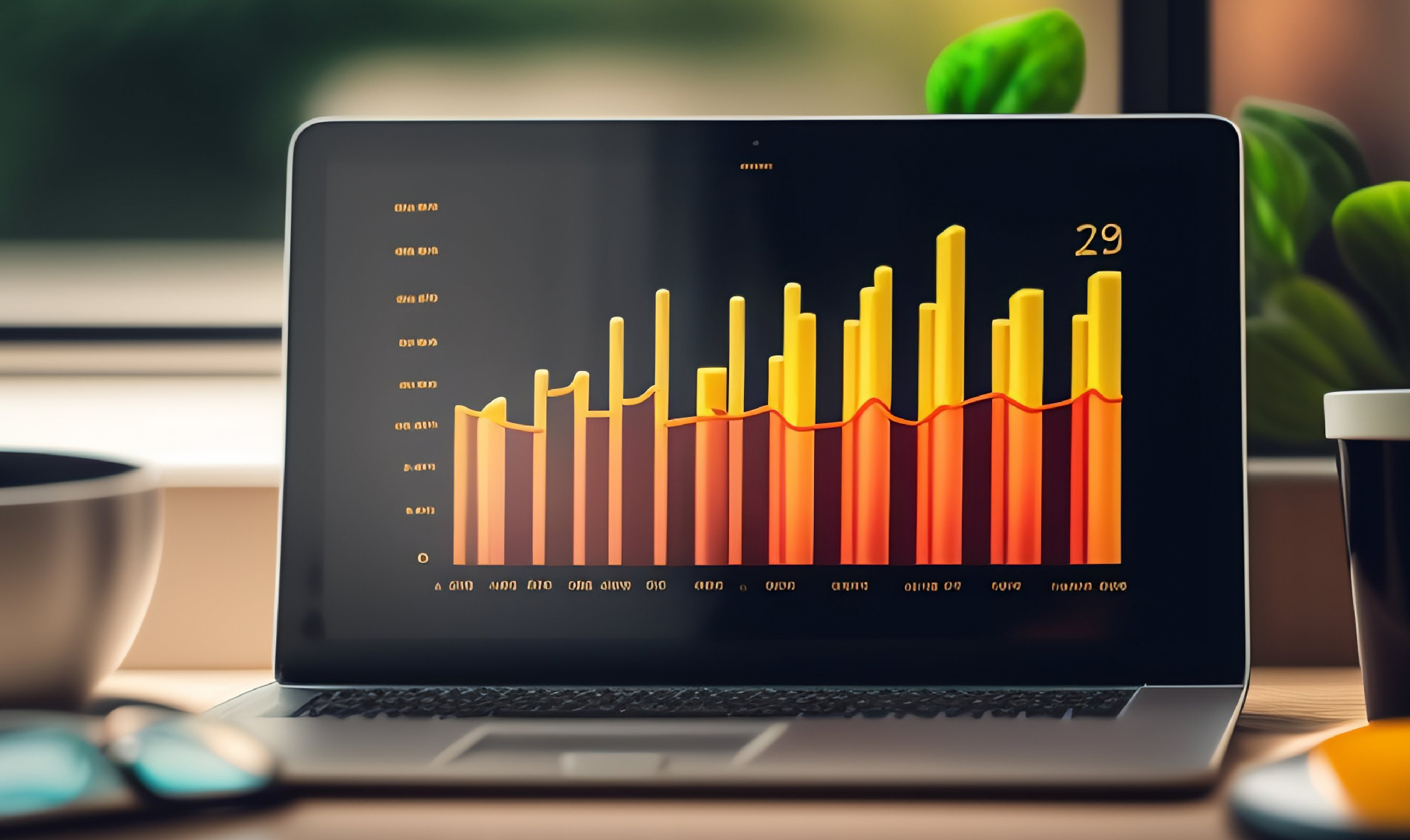Lead Funnel Mastery: Elevate Your B2B Lead Generation

Lead Funnel Mastery: Elevate Your B2B Lead Generation
In today’s fast-paced business world, mastering the lead funnel is crucial to generating leads for your business effectively. As a B2B company, you’re always on the lookout for ways to improve your customer relationship management and boost your sales funnel. The lead generation funnel is at the heart of this process, guiding potential customers through their journey from initial awareness to becoming loyal clients.
Ready to dive in? This blog reveals how to craft an effective lead magnet strategy to attract high-quality prospects and nurture them through each stage of the funnel, as well as how to measure and optimize the funnel’s performance, streamline the sales process, and drive business growth.
Why the Lead Generation Funnel Matters

Definition and importance
Before diving into the details, let’s start with the basics. A B2B lead generation funnel is a systematic sales process designed to attract and nurture potential customers, guiding them towards specific actions to learn more about your company and ultimately convert it into a closed business. This funnel is crucial for your B2B marketing strategy as it helps you identify your target audience, organize your sales process, and establish long-term connections with prospects.
By implementing an effective lead funnel, you can provide valuable content tailored to your potential customers’ needs, track your lead generation progress, and consistently improve your strategy. This approach reduces the time a prospect spends in the sales cycle and allows for continuous communication through warm phone calls and email marketing efforts.
Stages of the funnel
The B2B lead generation funnel consists of three primary stages:
- Top of Funnel (TOFU) – Awareness Stage: At this stage, you focus on attracting the attention of your target audience. You can use both outbound and inbound lead generation strategies, such as cold calling, organic SEO, and social media marketing, to drive brand awareness and increase website traffic.
- Middle of Funnel (MOFU) – Consideration Stage: Here, you provide more in-depth, targeted content to educate potential customers about how your products or services can solve their problems. This stage involves making warm phone calls and sending lead-nurturing emails full of valuable insights.
- Bottom of Funnel (BOFU) – Conversion Stage: In this final stage, you aim to convince potential customers to make a purchase or sign a contract. You can achieve this through ongoing email nurture sequences, warm phone calls, personalized experiences, or exclusive discounts on your products or services.
Key components
To create an effective B2B lead generation funnel, consider these essential components:
- Define your target audience and buyer persona
- Map your customer journey
- Create compelling lead magnets (e.g., ebooks, whitepapers, free trials)
- Drive traffic through various channels (SEO, PPC, social media)
- Gather prospect information
- Nurture leads with personalized content and communication
- Optimize your conversion process with clear calls-to-action and seamless sales processes
By understanding and implementing these key components, you can create a robust B2B lead generation funnel that effectively guides prospects through their buying journey, ultimately leading to increased conversions and business growth.
Crafting an Effective Lead Magnet Strategy
So, how do you get those high-quality leads into your funnel in the first place? It all starts with an irresistible lead magnet. A lead magnet is a valuable resource or incentive you offer to potential customers in exchange for their contact information. Here’s how to choose the right type of lead magnet, create compelling offers, and optimize for conversions.
Types of Lead Magnets
When choosing a lead magnet format, consider your goals, target audience, and business needs. Some popular types of lead magnets include:
- Ebooks and whitepapers: These in-depth resources establish your expertise and provide valuable industry insights.
- Checklists and cheat sheets: These simplify complex processes and offer quick reference guides.
- Templates and swipe files: Ready-to-use resources that save time and provide immediate value.
- Webinars and online courses: Educational content that demonstrates your thought leadership.
- Exclusive reports and research: Unique data and insights that attract attention and generate interest.
Creating Compelling Offers
To create lead magnets that convert, keep these key points in mind:
- Relevance: Ensure your lead magnet addresses a specific problem or need of your target audience.
- Value: Provide high-quality, actionable content that solves a real business challenge.
- Clarity: Use clear, concise language and structure your content logically.
- Visual appeal: Design professional and visually appealing covers or layouts.
- Actionable takeaways: Include practical advice and steps that readers can implement immediately.
Optimizing for Conversions
To maximize the effectiveness of your lead magnets:
- Create a dedicated landing page with a clear call-to-action and registration form.
- Use A/B testing to compare different lead magnet formats and offers.
- Promote your lead magnets through various channels, including your website, blog, and social media.
- Offer limited-time bonuses or early-bird discounts to create urgency.
- Follow up with leads promptly and nurture them with personalized content.
By crafting an effective lead magnet strategy, you’ll attract more qualified leads and guide them through your B2B sales funnel, ultimately driving growth for your business.
Nurturing Leads Through the Funnel
Attracting leads is just the beginning. Next, you need to keep them engaged and moving smoothly through your funnel. Discover top email marketing techniques, content personalization tips, and the importance of lead scoring and segmentation to ensure your leads are nurtured effectively.
Email Marketing Techniques
Email marketing remains the top lead nurturing tactic for B2B marketers. To make your email campaigns more effective:
- Personalize your messages using information collected from lead generation forms.
- Segment your email list based on behavior, lead score, and interests.
- Use dynamic content to automatically customize emails for each lead.
- Keep emails short, and focused on one relevant topic per message.
- Include clear, purposeful calls-to-action (CTAs) that guide readers to the next step in their journey.
Content Personalization
Tailoring your content to meet the specific needs and preferences of your leads can significantly improve engagement and conversion rates. To personalize your content effectively:
- Define your target audience and create detailed customer personas.
- Use demographic and behavioral data to segment your audience.
- Deliver targeted content that addresses the unique challenges and goals of each segment.
- Customize landing pages with language and imagery that resonates with specific segments.
- Share success stories and testimonials from satisfied customers to help leads envision the benefits of your product or service.
Lead Scoring and Segmentation
Implementing lead scoring and segmentation helps you prioritize your efforts and deliver more relevant content to your prospects. To optimize your lead nurturing process:
- Develop a lead scoring system that considers both explicit (known data) and implicit (behavioral) factors.
- Use lead scoring to identify high-value prospects and prioritize your outreach efforts.
- Segment your leads based on criteria such as industry, company size, job title, or geographic location.
- Tailor your marketing messages and offerings to meet the specific needs of each segment.
- Continuously analyze and refine your lead scoring and segmentation strategies based on performance data.
Measuring and Optimizing Funnel Performance

To truly master your lead funnel, it’s crucial to measure its performance and make data-driven improvements. Learn how to track key metrics, implement A/B testing strategies, and apply continuous improvement tactics to enhance your funnel’s effectiveness.
Key metrics to track
To gauge the effectiveness of your lead generation funnel, focus on these essential metrics:
- Lead-to-win rate ratio: This percentage shows how many leads entering your sales funnel are ultimately won or closed.
- Conversion rate: Typically, a 13-24% conversion rate is considered good for most businesses.
- Cost per lead (CPL): Calculate this by dividing your marketing spend by the number of leads generated.
- Cost per acquisition (CPA): Similar to CPL, but divided by the number of new customers acquired instead of leads.
- Customer lifetime value (CLV): This represents the expected total spend of a customer during their relationship with your business.
- Return on investment (ROI): This percentage offers a big-picture assessment of your demand generation efforts’ cost-effectiveness.
A/B testing strategies
A/B testing, also known as split testing, can boost your online store’s conversion rate by around 12% to 15%. To implement effective A/B testing:
- Set clear goals for each test.
- Focus on one element at a time to accurately measure the impact of each change.
- Use tools like FunnelKit Funnel Builder to create different test variants easily.
- Gather adequate data for statistical analysis before declaring a winning variant.
- Test various elements, including landing pages, checkout pages, and order bumps.
Continuous improvement tactics
To continuously enhance your lead funnel performance:
- Regularly analyze your funnel data to identify drop-off points and areas for improvement.
- Optimize lead generation forms through A/B testing to find the balance between user-friendliness and data collection.
- Develop strong SEO content that addresses your target audience’s pain points and ranks well in search engines.
- Leverage tools to gather prospect data and personalize your website for anonymous users.
- Segment your audience effectively and create personalized customer journeys for different segments.
- Continuously test and refine elements of your funnel, from design to copy, to improve conversion rates.
By consistently measuring, testing, and optimizing your lead funnel, you can improve its performance and drive better results for your B2B lead generation efforts.
Conclusion
Mastering the B2B lead generation funnel has a significant impact on your business growth and success. By understanding the stages of the funnel, creating compelling lead magnets, and nurturing leads effectively, you can guide potential customers through their buying journey with precision. Implementing personalized content, strategic email marketing and continuous optimization techniques allows you to build stronger relationships with prospects and increase your conversion rates.
To stay ahead in the ever-changing landscape of digital marketing, it’s crucial to keep refining your lead funnel strategy. By tracking key metrics, conducting A/B tests, and adopting a mindset of continuous improvement, you can enhance your funnel’s performance and drive better results for your B2B lead generation efforts.
Ready to take your lead funnel strategy to the next level? Contact us at Salessy.ai for a personalized consultation and stay ahead in the competitive B2B market.






